Join More Than 50,000+ Subscribers and get latest camera news and rumors
NEW CAMERA VIDEOS ON YOUTUBE
|
By admin, on February 20th, 2016

Finally after a long wait Nikon will finally reveal three new high end compacts camera next week at CP+ show.
Soon Nikon to announce the high-end compact camera for the next three models.
Nikon DL24-85
– Sensor: 1 inch BSI CMOS sensor
– lens: 24-85Mm F1.8-2.8
– size: 105.4 x 61.5 x 50.0 mm
– Weight: 350g
Nikon DL18-50
– Sensor: 1 inch BSI CMOS sensor
– lens: 18-50Mm F1.8-2.8
– size: 105.5 x 62.5 x 56.6 mm
– Weight: 350g
Nikon DL24-500
– Sensor: 1 inch BSI CMOS sensor
– lens: 24-500Mm F2.8-5.6
– size: 122.5 x 89.9 x 139.4 mm
– Weight: 830g
As you can see Nikon will use 1″ sensor in all its upcoming pro compact camera with different lenses. Nikon is finally in the mood to compete with Canon newly announced Canon G5X. G3X and G9X compacts camera.
Nikon already have a class leading range of 1″ sensor based mirrorless camera with ultra advance core specification, So we also expect that the upcoming compacts camera will have excellent core specification.
Also take a look at the additional list of 4 new compact camera coming on CP+ show 2016. Unfortunately still there is not update about the successor of Nikon coolpix A camera.
Stay with us and we will update you soon as we get any new information.
Like Us at Facebook to get all latest updates —>
source – digicame-info
By admin, on February 19th, 2016
 Canon 80D vs Canon 70D, Canon 70D successor does have enough changes to make you spend $1K cash on it, let’s find out. Canon 80D vs Canon 70D, Canon 70D successor does have enough changes to make you spend $1K cash on it, let’s find out.
| Features/ Models |
Canon 80D |
Canon 70D |
| Megapixel |
24.2MP APS-C CMOS sensor |
20.2MP APS-C CMOS Sensor |
| Sensor size |
APS-C – 22.5 x 15 mm |
APS-C – 22.5 x 15 mm |
| Low pass filter |
Yes |
Yes |
| Image processor |
DIGIC6 |
DIGIC 5+ |
| Image Stabilization |
No |
No |
| AF system |
45 points (all points cross type) |
19-Point All Cross-Type |
| ISO |
100-16000 Standard and 100-25600 Expandable |
100-12800 Standard and 100-25600 Expandable |
| Shutter Min/ mix |
Shutter 30 seconds -1/8000 |
Shutter 30 seconds -1/8000 |
| Continuous shooting speed |
7fps |
7 fps |
| Video |
Full HD 60fps |
Full HD 30fps |
| Display |
3 inches 1.04 million dot Vari-angle LCD |
3.0″ 1.04m-Dot Vari-Angle Touchscreen |
| Viewfinder |
Optical |
Optical |
| Hot shoe |
Yes |
Yes |
| Wireless |
Wi-Fi, NFC. Remote shooting |
Built-In Wi-Fi Connectivity |
| Environmentally sealed |
No |
No |
| Battery life |
|
|
| Dimensions |
139.0 x 105.2 x 78.5mm |
139.0 x 104.3 x 78.5 mm |
| Weight |
650g |
755 g |
SENSOR – Canon 80D is better than Canon 70D – Yes
The sensor inside the Canon 80D is completely new and features more standard ISO range compared to the Canon 70D camera, 4+ pixels inside the sensor resolution will add more details yo your images by maitning the same or may be better level of low-light performance.
Auto Fous – Canon EOS 80D is Better than Canon EOS 70D
Upgraded Phase AF Module AF System (45 vs 19 AF points)
The camera features upgraded Phase AF moudle AF system that carries 45 Points all cross type and the most advance part of this camera is 27 of the points are capable of focusing down to f/8 while shooting with super tele-photo lenses. Canon 70D AF system was limited to 19 point AF only, so its a big positive change on terms of dedicated Phase AF module inside the camera.
Upgraded Dual Pixel CMOS AF System inside Canon 80D (Fast AF during live shooting )
We have completely new Dual pixel CMOS AF sensor inside the of the Canon 80D camera, the 24MP camera sensor is developed with next generation of Dual Pixel CMOS AF technology used inside the Canon 7D Mark II camera and its AF performance during Live view shooting and video recording is significantly better than Canon EOS 70D.
Advance Image processor inside the Canon 80D compared to Canon 70D
The Canon 80D arrived with DIGIC 6 image processor inside the camera and the 70D was using Canon Dual DIGIC 6 image processor and as a result we can see slight increase in the performance speed of the Canon 80D DSLR.
Maintaing the Continuous shooting speed despite if increase in resolution – The Canon 80D carries 4MP + resolution compared to Canon 70D, but the continuous shooting speed of both the camera remains same.
Standard ISO range also pushed to approximate 1+ stop, the standard ISO range of the Canon 80D camera has been pushed up to 16000 but believe me it won’t going to show up any significant difference.
Canon 80D vs Canon 70D High ISO Test
 Canon 80D does show bit improvement over Canon 70D but that not sufficient to upgrade your Canon 70D camera with 80D, I will suggest you to wait for Canon 90D or get a Fullframe camera. Canon 80D does show bit improvement over Canon 70D but that not sufficient to upgrade your Canon 70D camera with 80D, I will suggest you to wait for Canon 90D or get a Fullframe camera.
Canon 80D or Canon 70D – Finale Verdict
Canon 80D features new sensor and advance AF system, hence you can see in the High ISO test that despite of increase in resolution the camera is still showing less noise compared to Canon 70D camera, hence we recommend you to get Canon 80D over Canon 70D.
Buy Canon 80D camera from Amazon || Buy Canon 80D camera from B&H
By admin, on February 17th, 2016
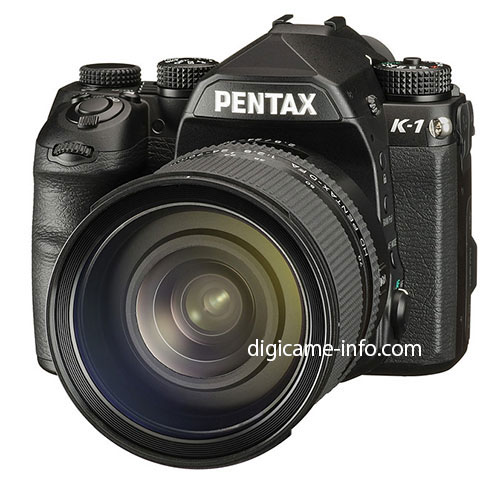
Finally the detailed specification of the upcoming Pentax K-1 camera leaked today, the camera features 36 MP sensor and records 4K movie.
PENTAX K-1 specifications
36.4MP CMOS sensor. A low-pass-less
– Realistic resolution. Motion correction by sensing the body to reduce the effects of the synthesis (ON / OFF possible)
– Low-pass selector
– Image processing engine PRIME IV
– Sensor Size: 35.9 x 24.0mm
– Video is full HD (60i / 30p). Recording level of manual setting Allowed
– 4K interval movie
– 14-bit RAW
– DR II
– Can be mounted lens is KAF3, KAF2, KAF, KA, K, there is compatible with power zoom lens
– AF sensor SAFOX12. AF point is 33 points (25 points are cross-type). -3EV Correspondence
– AF assist light
– Viewfinder magnification 0.70 times. 100% field of view
– Focusing screen Natural-Bright-Matte III
– Crop function
– LCD monitor 3.2 inches 1,037,000 dot. Flexible tilting (up and down 44 degrees, left and right 35 degrees, waist-level support)
– GPS built-in. ASTROTRACER. Electronic compass. GPS log
– Wi-Fi built-in. Remote control function
– Shutter unit of the compact new design. Durability is 300,000 times
– Shutter speed is 30 seconds -1/8000 seconds. Synchro speed is 1/200 sec
– Media SD / SDHC / SDXC (UHS-I). Dual card slot
– USB terminal (USB2.0, micro B), HDMI terminal (type D)
– Microphone jack, a headphone jack, X contact
– 5-axis camera shake correction “SR II”. Shift shake, corresponding to the rotation shake. Shutter five stages of effect
– Camera shake correction is panning automatically detect the
– Electronic Level
– Photometry sensor 86000 pixel RGB sensor. Real-time scene analysis system
– ISO range is 100-204800
– Continuous shooting 4.4 frames / sec (full size). 6.5 frames / sec. (APS-C)
– The number of pictures 70 sheets in the JPEG, 17 shots at the RAW (at full size 4.4 frames / sec.)
– Automatic horizontal correction, composition fine-tuning
– Clarity control, skin color correction function
– Hand-held HDR function (can be saved in RAW)
– Mount the top, card slot, release the socket, the operating unit assist light to illuminate the back of the monitor
– Control panel customization features
– The battery is D-LI90P
– Battery life is 760 sheets
– Body adopts the exterior to the magnesium alloy of the front and rear and bottom
– Dust and water structure which has been subjected to the 87-point ceiling. -10 Degrees of resistance to low temperature
– Size: 136.5 x110 x 85.5mm
– Weight: 925g (body only). 1010g (battery, including one SD card)
The camera will cost you approx 1999-2299 euros, expected to arrive next day (Feb 18 2016).
Stay with us on Facebook and twitter to get more news and Pentax Rumors
By admin, on February 16th, 2016
 Finally leaked images of the upcoming Canon G7X Mark II camera surfaced over the web, as we do know that the Canon G7X was using sensor from RX100 series camera. So we do also hope the recently announced camera will continue the trend. Finally leaked images of the upcoming Canon G7X Mark II camera surfaced over the web, as we do know that the Canon G7X was using sensor from RX100 series camera. So we do also hope the recently announced camera will continue the trend.
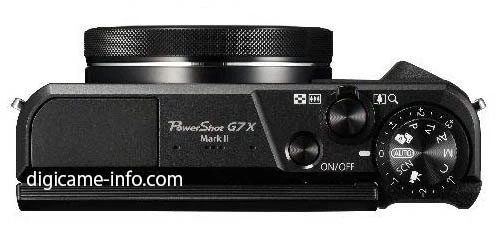 But the biggest question is the recently announce camera from Canon uses same sensor as its predecessor of it uses newly developed stacked CMOS 1″ sensor from Sony, we will soon reveal the details. But the biggest question is the recently announce camera from Canon uses same sensor as its predecessor of it uses newly developed stacked CMOS 1″ sensor from Sony, we will soon reveal the details.
Powershot G7X Mark II specs
- 1 inch 20MP CMOS sensor
- DIGIC7 processor
- 24-100mm f/1.8-2.8
- Image Stabilizer (IS) equipped.
- 9 aperture blades
- Control ring mounted
- Continuous shooting up to 8 frames/sec (even JPEG even RAW)
- 3.0 inches 1.04 million dot tilting LCD monitor
- Touch panel
- Display tilts 180 degrees upward, 45 degrees below
- Full HD video
- Time-lapse movie
- Wi-FI built-in
- NFC
- Picture Styles
- In camera RAW development
We have already published the images and leaked specification of Canon 80D camera a while ago, we also shown you the leaked images of Pentax K-1 camera.
Also take a look at the leaked images and specification of Canon SX70HS camera.
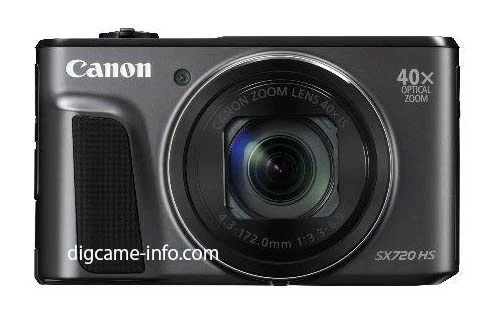 The camera will feature massive 40X optical zoom in a ultra-compact body The camera will feature massive 40X optical zoom in a ultra-compact body
- 20.3 MP CMOS sensor
- DIGIC6
- 40 times optical zoom
- Image Stabilizer (IS)
- Wi-Fi built-in
- NFC
- Full HD video
- 3.0 inches 922,000-dot LCD monitor
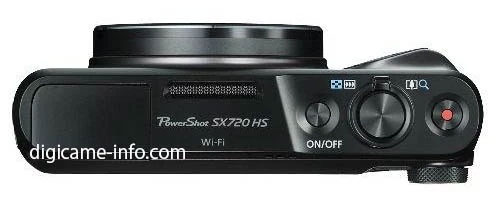 STAY WITH ON FACEBOOK | TWITTER | GOOGLE+ to get live news + See all Canon Rumors 24X7+\ STAY WITH ON FACEBOOK | TWITTER | GOOGLE+ to get live news + See all Canon Rumors 24X7+\
source – digicame-info
By admin, on February 16th, 2016
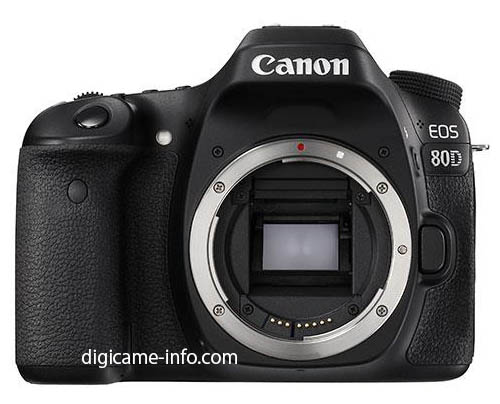
Images and specification of the to be announced Canon 80D camera finally leaked today, the camera features newly developed 24 MP dualpixel CMOS AF sensor and a upgraded 45 point AF system.
Canon will soon announce the EOS 80D. As of the specs are the following EOS 80D.
– 24.2MP APS-C CMOS sensor
– Dual Pixel CMOS AF
– Continuous shooting 7 frames / sec.
– Continuous shooting at the time of the live view 5 frames / sec. (AF tracking)
– AF 45 points (all points cross type)
– 7560 pixel RGB + IR photometry sensor
– ISO100-16000
– Flickerless shooting
– Finder is 100% field of view
– 3 inches vari-angle LCD monitor. Touch panel
– Video is full HD 60fps
– Time-lapse movie
– HDR
– Creative Filters
– Wi-Fi, NFC
– Remote imaging by smartphone
The announcement will happen this week, stay with us and we will update you soon.
More images of the Canon 80D
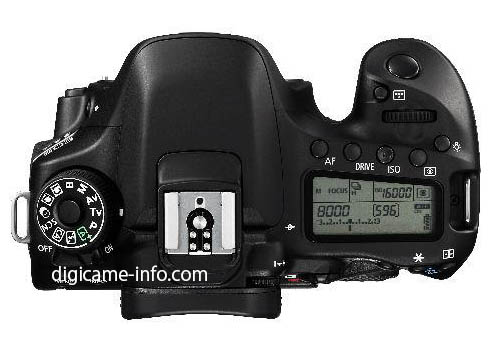 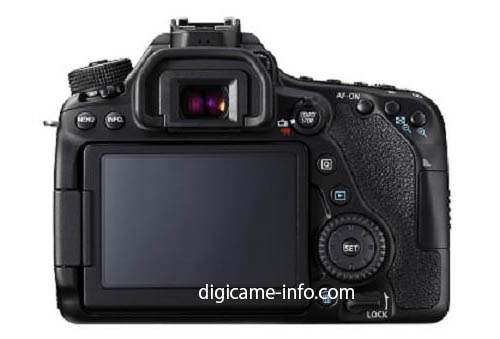
Follow us in Facebook for specific updates – Canon 80D at Facebook
STAY WITH ON FACEBOOK | TWITTER | GOOGLE+ to get live news + See all Canon Rumors 24X7+
source – digicame-info
By admin, on February 15th, 2016
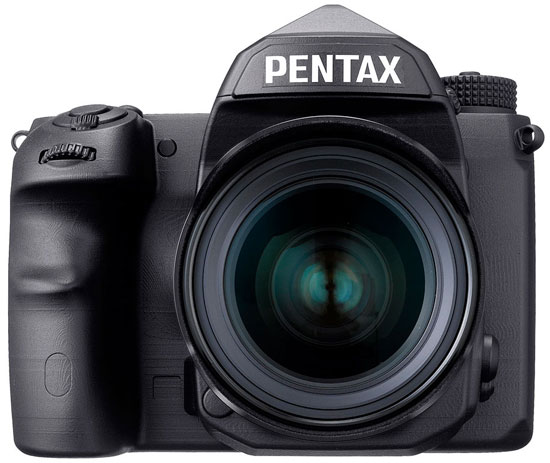 Finally we got the detailed specification of the to be announced Pentax K-1 camera, remember we have told you few days ago that the camera will arrive ob Feb 18 2016. The camera will carry a 33 point AF system that we have also told you yesterday. Take a look full specification of the camera. Finally we got the detailed specification of the to be announced Pentax K-1 camera, remember we have told you few days ago that the camera will arrive ob Feb 18 2016. The camera will carry a 33 point AF system that we have also told you yesterday. Take a look full specification of the camera.
– 36.4MP CMOS sensor. A low-pass-less
– Realistic resolution (pixel shift)
– Image processing engine PRIME IV
– Sensor Size: 35.9 x 24.0mm
– Video is full HD 60p
– 4K interval movie
– 14-bit RAW
– DR II
– KAF2 mount (KAF3, KAF2, KAF, KA, there is compatible with power zoom lens)
– AF sensor SAFOX12. AF point is 33 points (25 points are cross-type). -3EV Correspondence
– AF assist light
– Viewfinder magnification 0.70 times. 100% field of view
– Focusing screen Natural-Bright-Matte III
– LCD monitor 3.2 inches 1,037,000 dot. Flexible tilting
– GPS built-in. Wi-Fi built-in
– Shutter unit of the compact new design. Durability is 300,000 times
– Shutter speed is 30 seconds -1/8000 seconds. Synchro speed is 1/200 sec
– Media SD / SDHC / SDXC (UHS-I). Dual card slot
– USB terminal (USB2.0, micro B), HDMI terminal (type D)
– Microphone jack, a headphone jack, X contact
– 5-axis camera shake correction. Shutter five stages of effect
– Electronic Level
– Photometry sensor 86000 pixel RGB sensor
– ISO range is 100-204800
– Continuous shooting 4.4 frames / sec (full size). 6.5 frames / sec. (APS-C)
– The number of pictures 70 sheets in the JPEG, 17 shots at the RAW (when full-size 4.4 frames / sec.)
– The battery is D-LI90
– Battery life is 760 sheets
– The body is magnesium alloy and stainless steel. Dust and water. -10 Degrees of resistance to low temperature
– Size: 136.5 x110 x 85.5mm
– Weight: 925g
The most interesting part is the upcoming camera will feature 4K video recording and also features 5 axis built in image stabilization system.
Stay with us on Facebook and twitter to get more news and Pentax Rumors
source
By admin, on February 15th, 2016
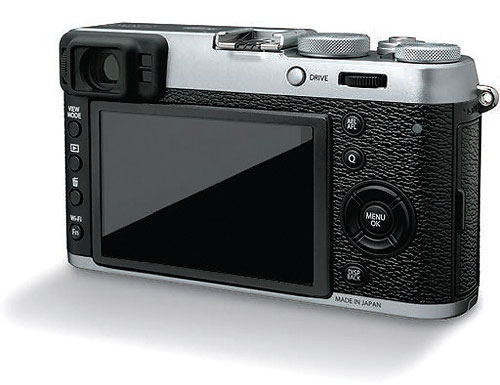 It has been a trend from the beginning that X100 Series uses Flagship camera sensor, so this time also won’t get surprised if you see 24.3MP APS-C X-Trans CMOS III Sensor inside the X200 camera. The AF system will also get improved similar to X-Pro 2 camera. It has been a trend from the beginning that X100 Series uses Flagship camera sensor, so this time also won’t get surprised if you see 24.3MP APS-C X-Trans CMOS III Sensor inside the X200 camera. The AF system will also get improved similar to X-Pro 2 camera.
However, Fujirumor also published rumored specification of X200 camera based on information provided by the source, take a look at the information below.
The source also shared some specs. So the X200 should have:
– the 24MP sensor of the X-Pro2 (and therefore also faster AF)
– A new bright 28mm lens (also the Fujifilm X70 features a 28mm lens)
– and enhanced hybrid VF with better EVF refresh rate
– Digital converter 35/50
– Tiltscreen
The camera will arrive in Aug/Sep, Stay with us and will sure bring more information very soon.
STAY WITH ON FACEBOOK | TWITTER | GOOGLE+ to get live news + Fuji rumors 24X7
Also see – More Confirmations: Fuji Working on Medium Format System
|
KEEP THIS BLOG ALIVE - Support New Camera Buy Canon Lenses, Buy Music CD or Digital Camera at amazon it helps this site, and you do not pay anything extra, it is just a way to help support this site.

|


















